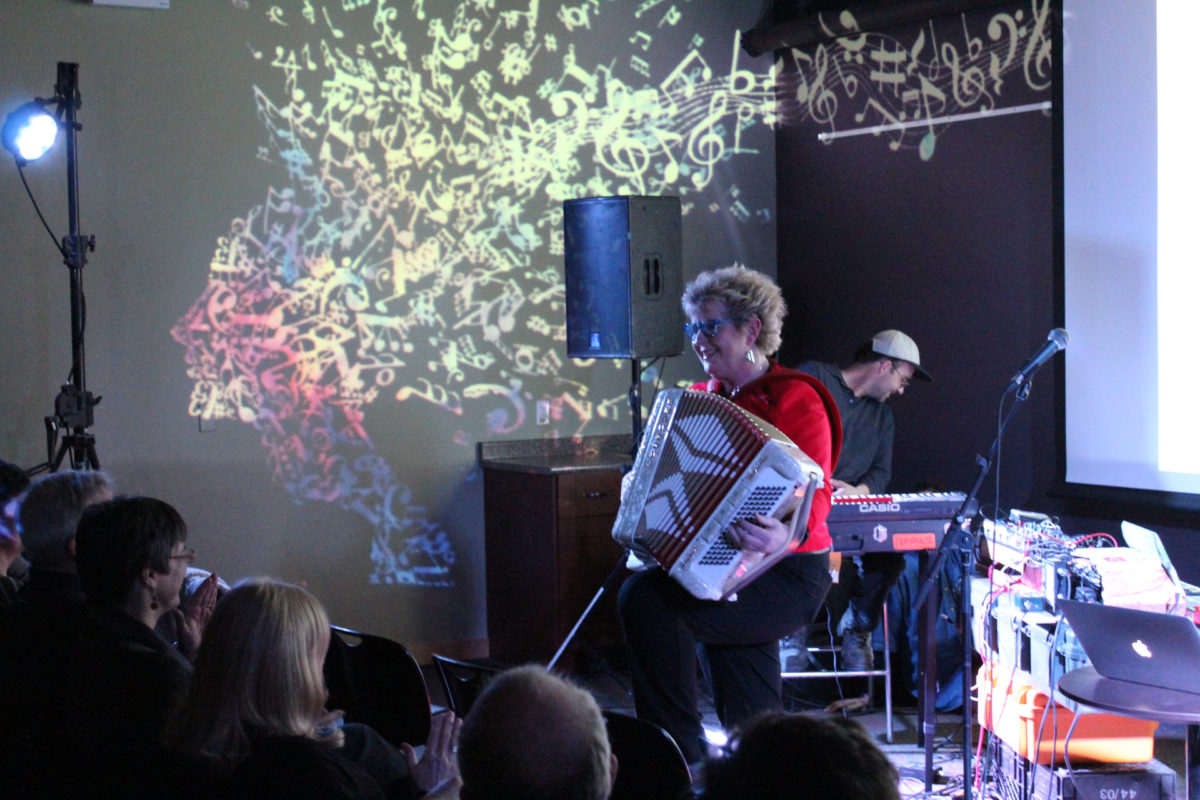Music is a part of life. That’s what neurologist Dr. Wendy Stewart told attendees at Shivering Songs’ This is Your Brain on Music event on Jan. 20.
“Music is everywhere,” said Stewart. “And we often don’t realize we are hearing music no matter where we are.”
Stewart said our bodies are always making music, whether we are aware of it or not. Our heartbeats and breathing create a constant biological rhythm.
Music has been a part of our society for millennia. According to Stewart, researchers have found flutes carved from bones that date back at least 9000 years, and use the same tonal scales we use today.
Humans aren’t the only species that enjoy music. Stewart entertained the audience by showing a popular YouTube video of a parrot dancing to Psy’s “Gangnam Style.” Snowball the parrot knows 25 different dance moves and can perform to multiple tunes, which shows how universal music is.
“When we think about music, you think you’re only listening but actually you experience music in all different ways, and even someone who is deaf can experience music in a profound way,” said Stewart.
“There is a Scottish percussionist who hears the different frequencies all up through her body, so when she plays, she plays in bare feet so she can experience that.”
With help from band Joyfultalk and solo artist Jim Bryson, Stewart showed the audience how music can evoke powerful emotions from listeners. After listening to each artist play an excerpt of their work, the audience was asked what they felt.
Joyfultalk’s music was described as traffic in a busy city, or something from Doctor Who, while the consensus on Bryson’s was that it was sad, calming music.
Music even has medical applications, which Stewart has used in her own work. It can be used to help pain management for cancer patients or calm people with anxiety. It is even be used in some dementia cases.
“If anyone has had any exposure, or family members or friends who have had Alzheimer’s disease, music can bring them to life,” said Stewart. “It’s very powerful.”
“There was one time when I was sitting and playing my accordion in a nursing home … and there was a lady that was brought in,” said Stewart. “I kept playing, and after about 10 minutes I saw her foot start to go. After a few more minutes, she started tapping her hand and by the end of it, she had her face up and was singing along.
“She had not said a word for about five months. At the end, she called me over and said ‘thank you,’ and this was somebody they thought wasn’t in there.
“It can be quite amazing to see people brought to life.”

